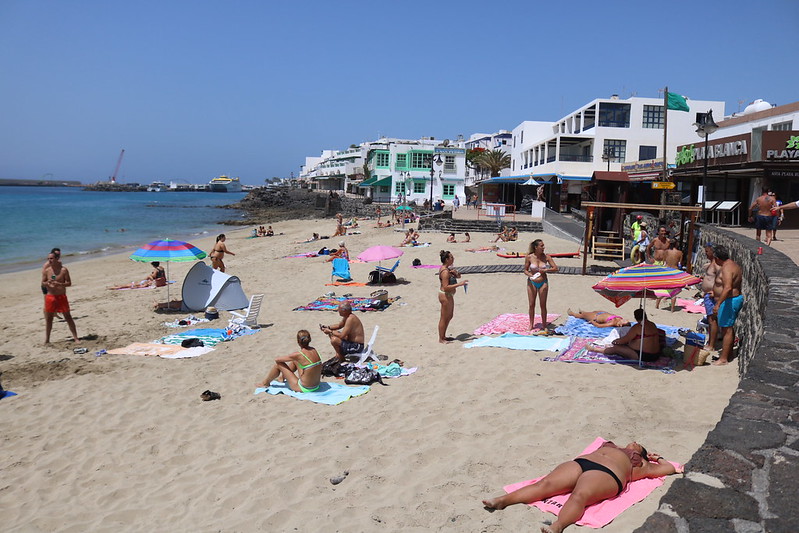The town beach of Playa Blanca hung the "full capacity" sign at noon this Monday, thus premiering one of the measures that will be part of the de-escalation process, in which it has to be guaranteed that safety distances are maintained. Thus, the sign warned residents that new users could not enter the beach, as the planned capacity had been reached.
It so happens that this is the only beach in Yaiza that the City Council had officially enabled for swimming on this first day of phase 2. However, as La Voz had already reported, the rest of the municipality's beaches can also be used, as specified by the Emergency and Security Consortium. And it is that to prohibit it, the City Council would have had to issue a closure decree, which finally no city council has done with any beach on the island.

In the case of Yaiza, all that has been done is to place "no swimming" signs, for example at the entrance to Papagayo and also at Playa Dorada. However, these signs are actually just a "recommendation", since as of this Monday neither the national ban on using beaches for swimming is in force, nor has the closure been formally ordered by the City Council. However, the signs have had an effect among bathers. Thus, although some had accessed Playa Doroda during the morning, most were concentrated on the town beach, which is where the capacity was exceeded at midday hours.
As for the rest of the island, according to the information collected by the Security and Emergency Consortium, almost all the beaches were with "medium occupancy" in the early hours of this Monday afternoon. According to that information, the least crowded was El Reducto beach, with "low occupancy", as was Las Malvas beach, in Tinajo. At the other extreme was La Garita beach, in Arrieta, with "high occupancy".

In addition, La Voz has also been able to verify how the influx has been increasing throughout the day to other beaches, such as those of Costa Teguise, especially noticeable in the smaller ones, such as El Jabillo.









